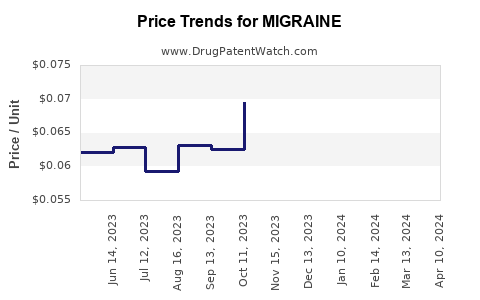Drug Price Trends for MIGRAINE
✉ Email this page to a colleague

Average Pharmacy Cost for MIGRAINE
| Drug Name | NDC | Price/Unit ($) | Unit | Date |
|---|---|---|---|---|
| MIGRAINE 250-250-65 MG CPLT | 70000-0247-01 | 0.06295 | EACH | 2024-11-20 |
| MIGRAINE 250-250-65 MG GELTAB | 70000-0611-01 | 0.06295 | EACH | 2024-11-20 |
| MIGRAINE FORMULA CAPLET | 24385-0365-78 | 0.06295 | EACH | 2024-11-20 |
| MIGRAINE 250-250-65 MG CPLT | 70000-0247-02 | 0.06295 | EACH | 2024-11-20 |
| MIGRAINE 250-250-65 MG CPLT | 24385-0365-71 | 0.06295 | EACH | 2024-11-20 |
| >Drug Name | >NDC | >Price/Unit ($) | >Unit | >Date |


